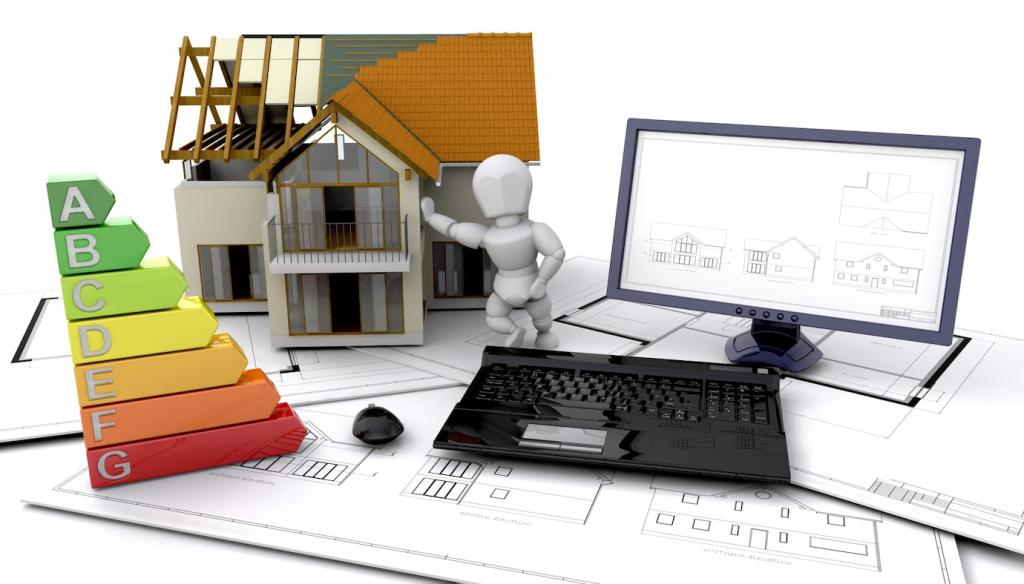Future Trends in Smart Home Technology
The landscape of smart home technology is evolving rapidly, transforming the way we interact with our living spaces. As innovation accelerates, homes are becoming more intuitive, secure, and energy-efficient than ever before. From seamless automation to personalized experiences, the future of smart homes promises to blend convenience with sustainability. Emerging advancements in connectivity, artificial intelligence, and sensory integration are poised to redefine our expectations of comfort and control at home. This overview delves into the most significant trends shaping the next wave of smart home innovation, highlighting the exciting directions in which this dynamic sector is headed.
Enhanced Connectivity and Interoperability
01
Universal Device Compatibility
Universal device compatibility is becoming a foundational expectation in smart homes. As more manufacturers adopt open standards, homeowners are gaining the flexibility to mix and match products regardless of brand. This removes the need for separate apps or specialized hubs, simplifying the user experience. Imagine a scenario where your smart lights, thermostat, cameras, and entertainment systems communicate flawlessly—adjusting settings in tandem to match your lifestyle. Such integration not only streamlines daily routines but also future-proofs your investment. Updates and new devices can be adopted without worrying about compatibility issues, ensuring your home stays at the cutting edge. This open ecosystem marks a move away from proprietary limitations, empowering users to create personalized, ever-evolving smart environments.
02
Faster and More Reliable Networks
Advancements in networking technologies, particularly with the proliferation of Wi-Fi 6 and 5G, are set to make smart homes faster and more responsive. These new standards enable devices to handle more data, improve responsiveness, and reduce latency for real-time interactions. Imagine voice assistants responding instantly, security cameras streaming in high resolution without buffering, and connected appliances updating firmware seamlessly in the background. A robust, low-latency network infrastructure is critical for supporting the growing number of IoT devices in homes, each demanding bandwidth and stability. As smart home systems rely on constant communication, the shift to ultra-fast networks will ensure a smoother, more satisfying user experience, while fostering innovation in new device capabilities.
03
Automated Device Discovery and Setup
One of the primary friction points in home automation has been the initial setup and configuration of devices. Future technologies are poised to simplify this process through automated device discovery and intuitive onboarding experiences. As soon as you bring a compatible gadget into your home, your smart system will instantly identify it, recommend optimal settings, and integrate it into your routines without the need for cumbersome pairing procedures. This level of automation reduces barriers for new adopters and allows seasoned users to expand their systems with ease. The promise of “plug-and-play” functionality ensures that even the most complex device networks remain manageable, contributing to broader adoption and satisfaction with smart home technology.
Artificial Intelligence and Personalization
Predictive Home Automation
Predictive home automation represents a significant leap beyond traditional programmable routines. By leveraging data from sensors, usage history, and even external factors like weather forecasts, AI-powered systems can anticipate and meet user needs proactively. For example, your home might lower blinds and adjust lighting as dusk approaches based on your previous habits, or preheat the oven when it senses you’re about to start cooking. This context-aware intelligence reduces the need for manual intervention, freeing up mental bandwidth and time. Predictive automation creates a more responsive, comfortable environment, and helps optimize resource usage by running devices only when needed. As algorithms become more sophisticated, homeowners can expect increasingly seamless and tailored experiences.
Voice and Gesture Recognition
Next-generation smart homes will offer far more natural, intuitive forms of interaction. Innovations in voice and gesture recognition are enabling users to control a vast array of devices without the need for remotes or apps. Enhanced voice assistants understand not only spoken commands but also tone, context, and even emotion, allowing for more nuanced interactions. Simultaneously, gesture control is making it possible to perform actions—like adjusting the thermostat or pausing music—with simple hand movements. These advancements contribute to a hands-free, accessible living environment that caters to varied abilities and preferences. By combining intelligent recognition with contextual awareness, smart homes are becoming truly responsive to their occupants’ presence and intent.
Customized Wellness and Comfort Features
Smart homes are increasingly being designed with well-being in mind. AI-driven customization extends beyond convenience to offer adaptive wellness and comfort features. Imagine a home that adjusts lighting to support your circadian rhythm, plays calming sounds when stress levels rise, or optimizes air quality based on occupancy and time of day. Systems can learn individual preferences for temperature, humidity, and even scent, creating environments that promote relaxation and productivity. These wellness-driven innovations are particularly important as people spend more time at home and seek out personalized comfort. Through ongoing learning and adaptation, smart homes offer a sanctuary that evolves with each user’s unique needs.
Energy Efficiency and Sustainable Living
Intelligent energy management goes far beyond simple monitoring. Modern smart homes use real-time analytics to optimize energy use at the granular level. By tracking consumption across lighting, appliances, and HVAC systems, AI can identify areas of inefficiency and offer actionable recommendations. For example, if it detects that certain rooms remain lit or climate-controlled unnecessarily, the system can automatically adjust settings or suggest schedule tweaks. Integration with utility providers and renewable sources allows homes to prioritize clean energy and adapt to variable pricing, reducing costs for homeowners. These advances not only contribute to environmental sustainability but also help users make informed choices about their energy use.
As solar panels and home battery systems become mainstream, future smart homes will feature advanced integration with renewable energy sources. Systems will intelligently manage when to draw from solar power, store excess energy, or feed it back to the grid for maximum benefit. Smart scheduling ensures that high-energy tasks, like charging electric vehicles or running major appliances, are performed when clean energy is most abundant. This level of synchronization maximizes efficiency and can significantly lower utility bills. By seamlessly orchestrating energy flows, smart homes actively participate in broader efforts to reduce reliance on fossil fuels and contribute to a sustainable future.
Adaptive climate control represents a quantum leap in both comfort and ecological responsibility. Smart thermostats, blinds, and ventilation systems use AI to learn occupants’ preferences and daily routines, fine-tuning indoor conditions for optimal well-being. Sensors monitor humidity, air quality, and temperature in real time, allowing the system to react dynamically to changes inside and outside the home. For instance, blinds may close automatically during peak sunlight to keep rooms cool, while HVAC systems operate only in occupied spaces. This targeted approach minimizes energy waste while maintaining a comfortable environment at all times. As these systems mature, they will play a pivotal role in the move toward energy-efficient, eco-friendly living.

